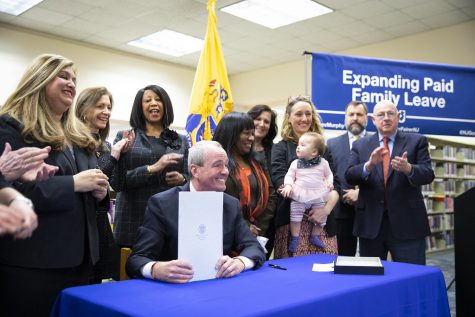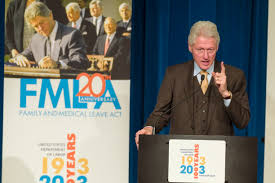Family leave or vacation?

Family leave is important for new mothers and fathers to bond with their newborn or to care for an ill family member; however, federal laws that provide leave for employers have stirred up many issues. With the rise in taxes and housing costs, it’s not beneficial for employees to take time off when they know they won’t be getting paid, which ultimately leads to people not asking for a leave for a newborn or an ill family member. It is evident that a new state law, providing paid leave, is the better choice.
Eight states and Washington, D.C. have adopted Paid Family Leave (PFL). California was the first state in 2004 to adopt this state law to provide their employees up to six weeks of paid leave. The Employment Development Department pays workers to take paid leave for certain reasons. As Family and Medical Leave Act (FMLA), a federal law, is in action, regulations have proven that the state law is more beneficial to the nation; however, less than 20 percent of the nation has adopted PFL.
The FMLA of 1993, signed by President Clinton, allows eligible employees “to take unpaid, job-protected leave for specified family and medical reasons.” In a 12-month period, employees are entitled to take 12 weeks of paid leave to care for a newborn, a family member with a serious health condition, or health condition that prevents them from working efficiently.

President Clinton celebrates the 20th anniversary of the Family and Medical Leave Act.
Although it’s an unpaid leave, only 59 percent of workers are eligible to take leave. The regulations have changed over the years but have only become stricter. It is understandable that employers don’t want their new employees to take time off the first few days on the job, but the law should decrease the minimum of one year to six months (such as the PFL). This way, if an employee has worked for the business for at least six months, they will be eligible to take unpaid leave.
Furthermore, FMLA does not cover small businesses. The law states that in order for a business to be eligible for unpaid leave, they must have at least 50 employees for at least 20 weeks. This regulation prevents employees in smaller businesses from getting unpaid leave. This is unfair as certain employees are prevented from having the opportunity to bond with a newborn or be there for an ill family member.
Even though the FMLA regulations have continued to change over the years, this federal law does not pay you during your leave. Paid Family Leave is a much better law that gives more benefits to a greater number of employees. With this law, an employee who works at least 20 hours and has worked for at least 26 weeks will be eligible for paid leave. Businesses with at least one employee are eligible to receive these benefits. PFL’s pros outweighs FMLA’s.
Unless our next president improves the benefits of FMLA and makes the regulations less strict, the best family leave is provided with the Paid Family Leave. More states need to follow in California’s footsteps and adopt PFL in order for employees to receive pay when caring for a newborn or a family member.
Unlike PFL, the FMLA does not require employees to provide proof of a serious medical condition; however, employers can ask for proof such as a birth certificate or medical paperwork. I believe that even though the eligibility requirements should be less strict, this factor should be more strict. Some employees might abuse this law, because their employers are not required to ask for proof for a legitimate reason for leave. I find it unfair how some employees don’t even have the opportunity to take paid or unpaid leave, while some of the ones who do ― nearly 20 percent ― abuse it. This is another factor of PFL that is more beneficial to workers than is FMLA.

This past March, Trump’s budget called for six weeks of paid family leave for adoptive parents or parents with a newborn. Also, his proposal calls for $1 billion to be used to create child-care programs. I agree with his proposal as the specific details to this budget will be further explained in 2020. This is a hot topic that our next president should be discussing and planning, as Trump is.
If each state were to adopt the Paid Family Leave Act, then more employees would be eligible for the benefits and they would be paid for going on leave. Since some might abuse this, I think each state should set their rules on how they want to check the proof that their employee is taking leave for a legitimate reason. New Hampshire is already on its way to also adopt a paid family leave. The other 41 states should follow in these footsteps.

Hobbies/Interests: Writing, playing tennis, & watching tv
Spirit animal: Koala
Places you want to travel to: Greece, Bora Bora, & Turks and...










